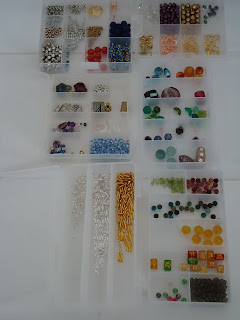Here it is the last day of November and I'm finally finding a chance to write a blog post for the month. It's been hectic around here to say the least, but I'm doing my best to stay focused using one of my old stand-bys: baby steps.
"Baby steps" are one of those things that tend to come up a lot in self-help books: Want to be more productive? Take baby steps. Want to give up a bad habit? Take baby steps! But what does taking baby steps really mean? And when do you get to graduate to long-distance running?
For a long time I confused baby steps with doing the easy parts first: "I'll just buy a new journal," or, "I'll learn to draw leaves before I try a full landscape." Not that there's anything wrong with this approach, but recently I've learned that baby steps are much bigger, and far more important, than they first appear. They're so important that I don't know what I'd do without them, especially with the way they help me stay organized, a key ingredient to goal accomplishment. And while they may not be as exciting as waltzing through the streets of Vienna or ice skating down a frozen canal, they sure are reliable. Some of my favorite steps include:
Baby Steps for Writers:
- Buy supplies in advance (yes, do buy those journals!). Notebooks, pens, Post-it notes, paper--buy in bulk whenever possible.
- Got some downtime? Make lists of potential agents, editors, and publishers.
- Write and work on your query letters and synopses anytime you can't get to your actual manuscript. Update as you edit and/or make changes to your story line.
- Create a work-in-progress binder with character bios, notes on setting, and any research material you need. Include a section for prompts and images cut from magazines or similar. Use for freewriting and brainstorming scenes and plot lines.
- Be prepared! Set up submission files of 5-, 10-, 20-, and 50-page manuscript excerpts in advance of querying. Individual agents have different requirements. You'll save time by having each type of submission ready to go.
- Make notes of what you will write during your next available writing session: e.g., Chapter Three; a description of your main character's neighborhood; a biography of your story villain.
- Find thirty minutes somewhere in your day to freewrite, whether it's to work on your manuscript, your journal, or a "just for fun" piece.
- Edit and revise a limited amount of pages a day, say, three to five. Go for three passes: one to check on consistency in names/dates/settings/back story/character goals and motivations; another to ensure your story makes sense and builds to a satisfying conclusion; and a third to weed out typos and awkward grammar.
Baby Steps for Artists:
- Create an art table or space that invites you to spend time there.
- Get to know your supplies. Learn what they can and can't do. Experiment with pencils, brushes, and various papers. Forget about "making art," just scribble!
- Keep your supplies to a minimum so you can get to work faster. Settle on one type of medium, one type of paper or other support per project.
- Limit your subject matter for a while to a single theme: still life, autumn landscapes, a trip abroad until you've exhausted all the possibilities and are ready to move on.
- Work from one how-to book from start to finish.
- Sketch for 15 minutes--anywhere, any time of day.
- Watch a how-to video once a day or week.
- Lay out your supplies and references the night before you start to work. Make a note of what you want to accomplish the following day.
Baby Steps for Bloggers:
- Brainstorm a list of topics.
- Create an editorial calendar.
- Prepare a file of photos or artwork to go with your posts.
- Write your drafts by hand at a set time and day.
- Set aside specific days and times to visit and comment on other people's blogs.
- Print out your blog posts and save into a binder for future reference.
- Keep a blogging journal: ideas, drafts, and reminders of why you are blogging in the first place.
Baby Steps for Crafters:
- Settle on one discipline for a set period of time, e.g. ceramics for the winter months; knitting a sweater from start to finish.
- Join a class or independent group of like-minded individuals.
- As with art, limit your supplies to what you really need. Don't get tangled up in extra yarn you won't use for a year or two.
- Set aside a dedicated day or time to work only on your current project.
- Keep a journal with photos to remind you of what you made, what you need to purchase, ideas for future projects, and a list of what you'd like to achieve later on: e.g., ten pairs of earrings, a set of garden tiles, three skirts, an afghan for a holiday gift.
Once you start working with baby steps, no matter how many times you fall down or bump into the furniture, I can promise you won't want to give up. Baby steps remind us to stay focused, stay determined, and stay playful, and before you know it--you've run, and won, a marathon.
Tip of the Day: The first and foremost baby step you can take today begins with a list. Starting now, make a list of 12 steps you can use to keep writing and creating during the holidays. If you discover you absolutely can't create in the midst festive chaos, then make a list of actions you can take starting January 1, 2018. For further inspiration, read Anne Lamott's Bird by Bird, one of the best books on the subject I know!







































